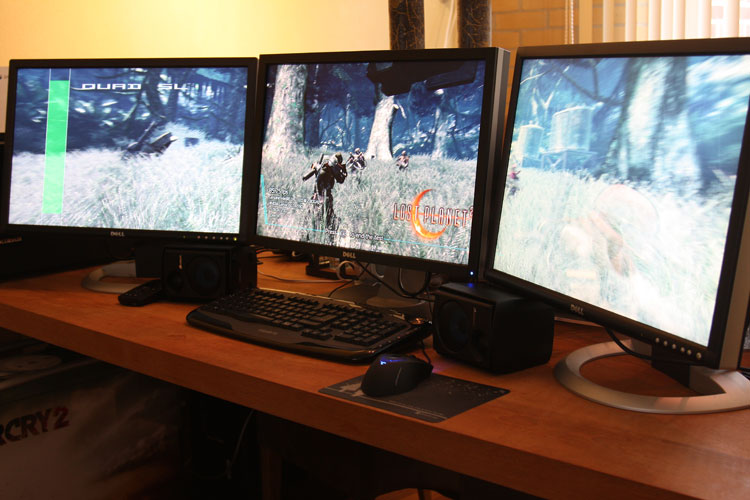Introduction

March 2011 was certainly an interesting month for the high-end graphics card aficionados. First, AMD released the Radeon HD 6990 and merely two weeks later NVIDIA released their GeForce GTX 590. Both products each with pros and cons, but overall extremely fast products offering you a lot of performance, at a price of course.
With the current state of games being mostly console ports and testing in monitor resolutions of say 1920x1080, as you have been able to see, especially with the somewhat dated titles it's really hard for these dual-GPU monsters to show off their true capacity. This is mostly due to 3D graphics engine requirements, some CPU limitation and the fact that these graphics cards can calculate much faster than the game requires.
There's an exception to that rule, both AMD and NVIDIA have game support for triple monitor gaming. AMD has Eyefinity and NVIDIA calls this feature NVIDIA Surround Vision. Whereas AMD's implementation is supported on many 'single' cards ever since the 5000 series, NVIDIA requires you to go SLI with the series 500 cards in order to get that feature activated. The GTX 590 however runs SLI internally and as such it's NVIDIA's first standalone card that supports three monitors straight out of the box.
The interesting thing is that by gaming with three monitors the graphics card needs to work three times harder as well (well for the vast majority that is), and that is where the entire ballgame can change performance wise as the variables and dynamics change real fast.
Then there are so many variables that can effect performance in such high resolutions. Where a R6990 might be slower in lower resolutions it could very well be faster in the highest resolutions thanks to the extra graphics memory (2GB per GPU). It also works vice versa, NVIDIA's Fermi architecture might have a little more bite in GPU limited situations as AMD moved their architecture to VLIW4.
But no matter how strong these GPUs are, if the drivers are not 100% up-to snuff, everything can be wasted in terms of performance scaling, that is the number one danger with multi-GPU gaming. In this article we're going to make it difficult on these 600 EUR monster graphics cards. We'll not be forfeiting on image quality, I mean if you put down 600 EUR or even 1200 EUR to game with three monitors, we do not expect that you'll settle with 2xAA and measly lowered texture quality.
We'll take three 1920x1200 Dell 24" monitors, configure them in a 5760x1200 pixel resolution on both products and fire off a dozen of games at that resolution with superior image quality settings. Not only will we be looking at 'per card' performance, we'll now double up performance once more as we'll place the cards into quad-GPU mode via SLI or CrossfireX. So for both AMD and NVIDIA that means chucking up quad GPU performance and compatibility.
Let's have a peek on how well these cards perform, and where we are anno 2011 in terms of quad GPU support, at a monitor resolution of 5760x1200. But have a peek first at how we test.

